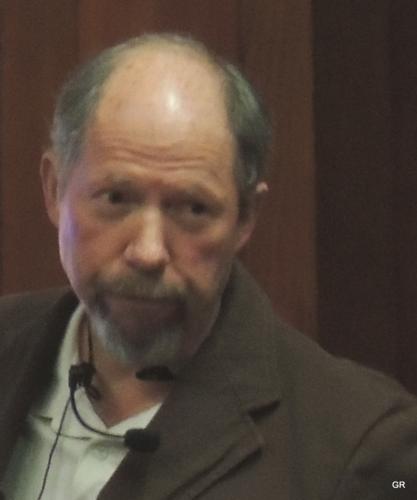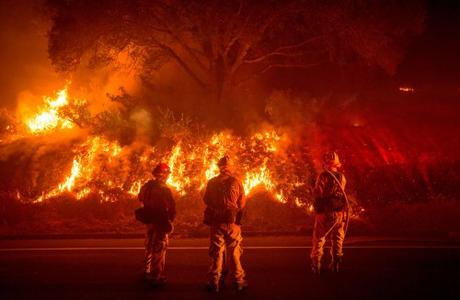
As a physical geographer who has studied and lectured on Earth’s soils, geosphere, atmosphere, and biosphere, I feel compelled to share my deepest concerns about our future. While I desperately hope for positive outcomes, my experience forces me to describe the truly catastrophic possibilities that lie ahead.
The truth is, we’re facing a potential apocalypse.

Our planet is heading towards an extreme heating scenario that could render large swaths of the globe uninhabitable within our lifetimes. The wildfire smoke andheat waves we’re seeing now? That’s just a tiny preview of the hell that awaits us (Baranzini, et al. 2003, Kemp et al. 2022, Matthews, et l. 2017).
What to expect from sea level rise, ocean heating, droughts and crop failure, some of the major feedback loops, and societal collapse.
Sea level rise won’t just flood a few coastal areas – it will likely submerge entire nations and displace billions. I expect to see climate refugees in the hundreds of millions, sparking conflicts and societal collapse as resources grow scarce (Cazenave and Cozannet 2014, FitzGerald et al. 2008).
The oceans are turning into warm, acidic wastelands. Mass coral bleaching events will soon give way to total ecosystem collapse. Fisheries that billions depend on will vanish. Oxygen-depleted dead zones will expand dramatically (Guinotte and Fabry 2008, Koch et al. 2013).
On land, we’re facing megadroughts that will make the Dust Bowl look like a minor dry spell. Crop failures will be widespread and famines inevitable (Mukherjee et al. 2018, Cook et al. 2018). Water wars between nations are all but certain (Hartmann 2010, Biermann and Boas 2008).
Feedback loops like methane release from thawing permafrost will probably speed up warming to levels incompatible with civilization as we know it. The Amazon and other crucial carbon sinks will flip to become net emitters (Armstrong et al. 2022, Canadell and Jackson 2021, Cox et al. 2000, Li et al. 2024, Xu et al. 2011).
Make no mistake – we are on track for societal collapse within decades. The climate crisis will overwhelm our ability to adapt. Governments will fall. Infrastructure will crumble. Billions may die (Brozovic 2023, Douglas et al. 2016).
I take no joy in sharing this grim outlook. But as a scientist, I have a duty to sound the alarm. We’ve squandered decades of warnings, and must now face the consequences. Our window to avoid catastrophe is vanishingly small if it even exists.
Frankly, I fear it may already be too late. But we have no choice but to try. We need radical, immediate action to slash emissions and begin large-scale carbon drawdown (Fawzy et al. 2020, VijayaVenkataRaman 2012). Anything less is suicidal.
The crisis is here and it will get worse. We must act now or condemn future generations to an unimaginable hell on Earth. There are important issues to consider and I will comment on some in follow-up blog posts.
References
While on the faculty at Columbia University during the 1980s, I taught Physical Geography, Climatology, and Biogeography. The Geography Department closed, and I left before getting a chance to work with Columbia’s climatologists. As global warming has advanced, scientists at universities worldwide have turned their attention to climate change. I reviewed some of their work concerned with the growing threat of catastrophe for this post.
Armstrong, D.I., Staal, A., Abrams, J.F., & Scheffer, M. (2022). Exceeding 1.5 C global warming could trigger multiple climate tipping points. Science, 376(6519), eabn7950.
Baranzini, A., Chesney, M., & Morisset, J. (2003). The impact of possible climate catastrophes on global warming policy. Energy Policy, 31(4), 691-701.
Biermann, F., & Boas, I. (2008). Protecting climate refugees: the case for a global protocol. Environment: Science and Policy for Sustainable Development, 50(6), 8-17.
Brozović, D. (2023). Societal collapse: A literature review. Futures, 156, 103080.
Canadell, J. G., & Jackson, R. B. (2021). Ecosystem collapse and climate change. In Ecosystem Collapse and Climate Change (pp. 1–15). Springer International Publishing.
Cazenave, A., & Cozannet, G. L. (2014). Sea level rise and its coastal impacts. Earth’s Future, 2(2), 15–34.
Cook, B. I., Mankin, J. S., & Anchukaitis, K. J. (2018). Climate change and drought: From past to future. Current Climate Change Reports, 4(2), 164–179.
Cox, P. M., Betts, R. A., Jones, C. D., Spall, S. A., & Totterdell, I. J. (2000). Acceleration of global warming due to carbon-cycle feedbacks in a coupled climate model. Nature, 408(6813), 184–187.
Douglas, P. M. J., Demarest, A. A., Brenner, M., & Curtis, J. H. (2016). Impacts of climate change on the collapse of lowland Maya civilization. Annual Review of Earth and Planetary Sciences, 44, 613–645.
Fawzy, S., Osman, A. I., Doran, J., & Rooney, D. W. (2020). Strategies for mitigation of climate change: a review. Environmental Chemistry Group, 42(1), 1–13.
FitzGerald, D. M., Buynevich, I. V., Argow, B. A., & Cleary, W. J. (2008). Coastal impacts due to sea-level rise. Annual Review of Earth and Planetary Sciences, 36, 601–647.
Guinotte, J. M., & Fabry, V. J. (2008). Ocean acidification and its potential effects on marine ecosystems. Annals of the New York Academy of Sciences, 1134, 320–342.
Hartmann, B. (2010). Rethinking climate refugees and climate conflict: Rhetoric, reality and the politics of policy discourse. Journal of International Development, 22(7), 901–910.
Kemp, L., Xu, C., Depledge, J., Ebi, K.L., & Huybrechts, P. (2022). Climate Endgame: Exploring catastrophic climate change scenarios. Proceedings of the National Academy of Sciences, 119(44), 2119526119
Koch, M., Bowes, G., Ross, C., & Zhang, X.‐H. (2013). Climate change and ocean acidification effects on seagrasses and marine macroalgae. Global Change Biology, 19(1), 103–115.
Li, G., Törnqvist, T. E., Dangendorf, S., & Alvarez-Castro, S. (2024). Real-world time-travel experiment shows ecosystem collapse due to anthropogenic climate change. Nature Communications, 15(1), 1–9.
Matthews, T. K. R., Wilby, R. L., & Murphy, C. (2017). Communicating the deadly consequences of global warming for human heat stress. Proceedings of the National Academy of Sciences, 114(21), 5381–5386.
Mukherjee, S., Mishra, A. K., & Trenberth, K. E. (2018). Climate change and drought: a perspective on drought indices. Current Climate Change Reports, 4(2), 145–163.
VijayaVenkataRaman, S., Iniyan, S., & Goic, R. (2012). A review of climate change, mitigation and adaptation. Renewable and Sustainable Energy Reviews, 16(1), 878–884.
Xu, C., Liang, C., Wullschleger, S. D., Wilson, C. B., & Shi, X. (2011). Importance of feedback loops between soil inorganic nitrogen and microbial communities in the heterotrophic soil respiration response to global warming. Nature Reviews Microbiology, 9(12), 870–878.

